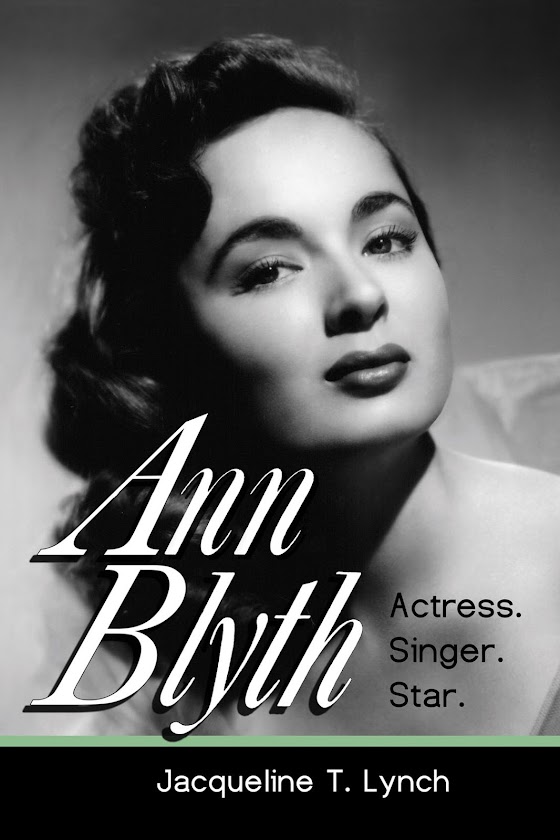Ann Blyth was likely around 15 years old at the time this series of publicity photos were taken. One of the first actions a Hollywood studio, in this case, Universal, took upon signing a new talent for their roster was to experiment with the actor's appearance. Beginning a 7-year hitch with a studio could be a daunting experience for any young actor or actress. It must have been confusing to discover upon reaching the makeup department that what the studio really wanted must be somebody else entirely.
An
early publicity photo from this time shows Ann standing on the steps of a train
passenger car, posed rather stiffly, smiling dutifully, but perhaps a little
nervously, for the camera. The bright
sunshine floods her features, and with glare that head Universal still
photographer Ray Jones would surely not permit in his studio. She is dressed in the proper little girl
attire of the day: a long-sleeve dress and pinafore falling just above the
knee, white ankle socks and Mary Janes, an enormous bow perched on the back of
her head, clutching a small purse. She
looks like she might be coming to visit Grandma. She is fourteen years old.
It’s
hard to imagine in two years she’d be seducing Zachary Scott before shooting
him, and slapping Joan Crawford—only on film, of course.
Universal
press agent, Frank McFadden, recalled for Photoplay
magazine in 1956 when he first met Ann Blyth and her mother at Los Angeles’
Union Station when she arrived to begin her seven-year contract with the
studio.
“She
was just a sweet little girl holding her mother’s hand, a little afraid—it
seemed to me. I took them out to the
Hotel Knickerbocker, and since their room wasn’t ready, we drove around a
little while and I showed them the sights.
I thought she was just another pretty child coming to Hollywood then.”
They gussied up -- one might say for these photos, "hussy-ed up" their new acquisition for the test photos, but quickly changed tactics and put her in four innocent roles in four teen musicals before she got a chance at playing the wicked Veda Pierce. And she didn't need a lot of makeup and provocative poses for that; she just had imagination and talent.
Also available in eBook at:






